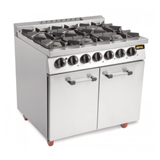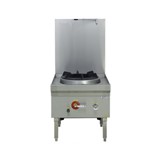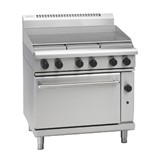Cooking pasta may seem like a straightforward task, but true mastery of the art requires more than just boiling water and tossing in the pasta. In this comprehensive guide, we will explore the secrets to becoming a pasta cooking expert with the help of pasta cookers. From the basics of installation and setup to the intricate details of achieving the perfect pasta, this article will take your culinary skills to new heights.
Choosing the Right Pasta Cooker
Before diving into the art of pasta cookery, it's essential to choose the right pasta cooker for your kitchen. There are various types available in the market, from stovetop models to electric cookers. Each type has its advantages and disadvantages, so it's essential to understand which one best suits your needs.
Stovetop pasta cookers are classic and affordable options. They come in different sizes, allowing you to cook various amounts of pasta at once. However, they require a separate stovetop, and the cooking time may vary depending on the type of stove you have.
Electric pasta cookers, on the other hand, offer convenience and precision. They come with built-in timers and temperature controls, ensuring that your pasta is cooked to perfection every time. However, they may take up more counter space, and their initial cost might be higher than stovetop models.
Setting Up Your Pasta Cooker
Once you have your pasta cooker, proper setup is crucial for optimal performance. The first step is to find a suitable location for your cooker. It should be placed on a flat, stable surface near a power source (if it's an electric model) and close to your cooking area.
For stovetop pasta cookers, you need to ensure that the size of the cooker matches the size of your stove's burner. It should sit comfortably on the burner without tilting or wobbling. If you have a gas stove, make sure there's enough clearance between the burner and the bottom of the cooker to prevent flare-ups.
Electric pasta cookers require a bit more planning. Since they need to be plugged into an electrical outlet, ensure that the cord is long enough to reach the outlet without stretching or straining. It's also crucial to keep the area around the plug dry and free from any potential hazards.
After placing the cooker in the right spot, you'll need to follow the manufacturer's instructions for any assembly or additional setup. Some electric pasta cookers might require you to attach specific parts, while others might come pre-assembled and ready to use.
Once your pasta cooker is set up and ready to go, give it a quick test run. Fill it with water and turn it on to check that it's functioning correctly. This initial test will help you identify any issues before you start cooking your precious pasta.
The Golden Ratio: Unlocking Temperature and Timing for the Perfect Pasta
Water Temperature: The Secret Ingredient
The water temperature plays a significant role in cooking pasta to perfection. The commonly recommended water temperature for cooking pasta is 212°F (100°C), which is the boiling point of water at sea level. However, this temperature might not be ideal for all types of pasta.
Different types of pasta require different cooking times, and that's where the water temperature comes into play. Cooking pasta at a rolling boil might work well for hardier varieties, but for more delicate options like fresh pasta or filled pasta, a gentler simmer might be better.
The golden rule is to bring a large pot of water to a boil and then add salt. The salt enhances the pasta's flavor, but more importantly, it raises the water's boiling point, which helps the pasta cook more evenly. Once the water is boiling, you can add the pasta and stir it to prevent sticking.
Timing Is Everything
Timing is crucial when it comes to pasta cookery. Cooking pasta for the right amount of time can make a world of difference. Undercooking pasta can leave it tough and chewy, while overcooking can turn it into a mushy mess.
To achieve the perfect al dente texture, start testing the pasta a minute or two before the recommended cooking time. Al dente means "to the tooth" in Italian, and it refers to pasta that is firm to the bite while still being tender. When you bite into al dente pasta, you should feel a slight resistance.
Keep in mind that the cooking time can vary depending on the pasta's thickness and shape, so always check the package instructions for guidance. For fresh pasta, the cooking time is usually much shorter than dried pasta, so be vigilant and taste it frequently as it cooks.
Once your pasta is cooked to perfection, drain it immediately to stop the cooking process. You can use a colander or a pasta strainer for this purpose. Avoid rinsing the pasta, as it washes away the starch that helps the sauce adhere to the pasta.
Mouthwatering Pasta: Unleashing Flavor with Cookers' Water and Salt Alchemy
Salting the Water: The Flavor Foundation
Have you ever wondered why restaurant pasta tastes better than home-cooked pasta? The secret lies in the salt. Properly salting the cooking water is a crucial step in enhancing the flavor of your pasta dishes.
The rule of thumb is to use one to two tablespoons of salt per gallon of water. This might seem like a lot, but keep in mind that most of it will be left behind in the cooking water. The pasta absorbs only a small amount of the salt, so don't worry about it making your dish overly salty.
The salt in the water not only seasons the pasta but also helps season the sauce. When you add the sauced pasta to the saucepan or skillet, it brings along some of the salty pasta water, which adds depth and richness to the sauce. This is why you'll often see chefs reserving a cup of pasta water before draining the pasta to use in their sauce.
Cooking Water: Liquid Gold
The water used to cook pasta holds a treasure trove of flavors and textures. Instead of mindlessly draining it away, you can reuse the cooking water to elevate your pasta dishes.
One way to use the pasta water is to loosen the sauce. Sometimes, when you add the pasta to the sauce, it might become too thick or dry. In such cases, you can add a splash of pasta water to create a silky, smooth sauce that coats the pasta beautifully.
The starchy pasta water acts as a natural emulsifier, helping the sauce cling to the pasta strands more effectively. This is particularly useful for oil-based or butter-based sauces that tend to separate.
Additionally, pasta water can be the secret ingredient for finishing the dish. By adding a bit of pasta water to your sautéed or simmering sauce, you can create a glossy, velvety texture that makes your pasta dish restaurant-worthy.







-160x160-state_article-rel-cat.png)


-160x160-state_article-rel-cat.png)










